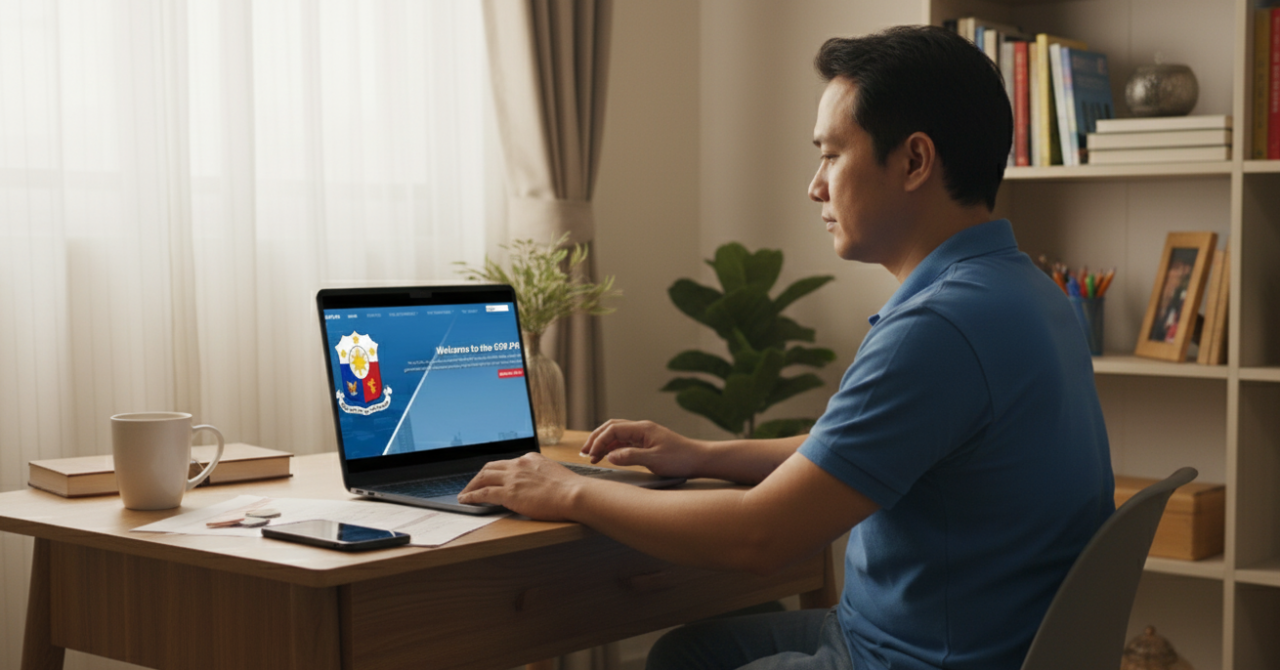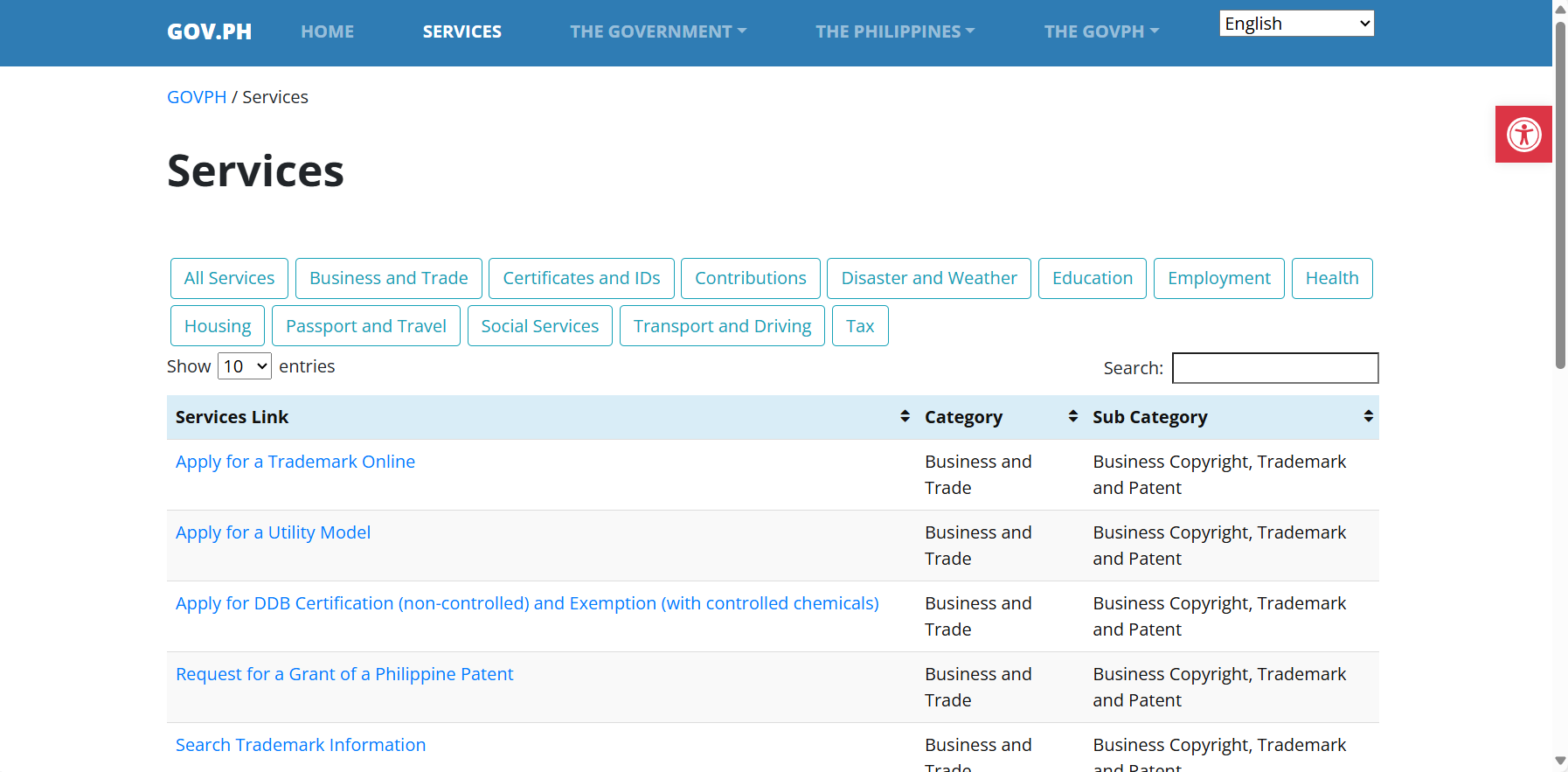If you want official government information without the guesswork, start with the National Government Portal (www.gov.ph). It is the country’s front door to verified services, agency links, advisories, and help channels, all maintained by the Department of Information and Communications Technology.

What the Portal Is
The National Government Portal unifies online government content so citizens can find agencies, e-services, and public advisories in one place. DICT built it to improve access and reduce confusion from scattered websites.
What you will find on www.gov.ph
- Agency Directory with links to official sites of departments, GOCCs, and attached offices. This helps you avoid fake or copycat sites.
- E-services access such as passports, NBI, SSS, PhilHealth, PRC, and more, with many processes now partly or fully online.
- Hotlines and advisories including government contact numbers and service notices.
- Citizen participation and feedback through the portal’s e-Participation tool.
Business and Trade
Starting or managing a business in the Philippines often feels like juggling multiple agencies. That’s where the portal helps—it brings services together in one place.
- Business registration – Secure permits and register your business through official channels like the Central Business Portal.
- Tax and banking assistance – Access government programs that support SMEs with loans and incentives.
- Product monitoring and complaints – File reports about substandard goods or unfair trade practices.
Having these tools in one hub saves entrepreneurs time and shields them from misinformation.
Disaster and Weather
Filipinos live with typhoons, floods, and earthquakes. Quick access to official updates can mean the difference between safety and danger.
- Weather advisories – Get real-time bulletins from PAGASA.
- Disaster management resources – Learn about evacuation plans and relief operations.
- Complaint channels – Report lapses in disaster response.
Staying informed through www.gov.ph helps communities prepare instead of panic.
Health
Healthcare can feel overwhelming when services are scattered. The portal puts the essentials in one place.
- Hospital and facility regulation – Check accreditation of hospitals or clinics.
- Government health programs – Enroll in PhilHealth or DOH initiatives.
- Assistance channels – Access medical aid programs during emergencies.
This makes it easier to focus on care rather than bureaucracy.
Social Services
Social support programs are vital for families, seniors, and vulnerable groups.
- Pensions and benefits – Apply for SSS, GSIS, and other government pensions.
- Welfare programs – Explore DSWD assistance like 4Ps or emergency aid.
- Other support services – Access financial or housing subsidies.
It ensures no Filipino is left guessing about where to ask for help.
Certificates and IDs
Government documents are part of everyday life—from getting a job to traveling abroad.
- Birth and marriage certificates – Request copies through PSA Serbilis.
- Clearances and licenses – Secure NBI clearance, driver’s license, or professional IDs.
- National ID (PhilSys) – Register for a single ID that integrates key services.
With centralized access, citizens avoid long lines and outdated processes.
Education
Education services aren’t just for students—they also cover teachers, parents, and researchers.
- Enrollment and registration – Access DepEd or CHED portals for school registration.
- Scholarships and financial aid – Apply for CHED financial assistance.
- Complaints and monitoring – Raise issues about school quality or accreditation.
This empowers families to secure education opportunities with confidence.
Housing
A roof over one’s head is more than shelter—it’s security.
- Settlement and housing programs – Apply for government housing projects.
- Infrastructure monitoring – Track progress of government-funded projects.
- Contractor accreditation – Check legitimacy of builders to avoid scams.
It’s about ensuring safe homes and transparent projects for communities.
Tax
Taxes fund the nation, but compliance can be confusing.
- Tax filing and payment – Access BIR e-services to submit returns online.
- Guides and requirements – Learn about deadlines and forms.
- Assistance tools – Use calculators or FAQs for smoother filing.
The portal reduces the stress of deadlines by giving you a single starting point.
Contributions
Contributions to social agencies matter for future benefits.
- SSS and GSIS contributions – Track payments and eligibility.
- PhilHealth contributions – Confirm remittances for healthcare coverage.
- Benefit applications – Process claims for retirement or disability.
Transparency here builds trust in the system.
Employment
Finding and keeping a job means meeting requirements and knowing your rights.
- Employment requirements – Process clearances or eligibility exams.
- Job postings – Search for government job opportunities.
- Complaint channels – Report unfair labor practices.
This gives workers more control over their careers and protection from abuse.
Passport and Travel
Travel is smoother when requirements are clear.
- Passport applications – Book DFA appointments online.
- Visa information – Access guidance for tourists and OFWs.
- Travel advisories – Stay updated on official warnings.
It takes the guesswork out of traveling abroad or hosting visitors.
Transport and Driving
Road safety depends on proper registration and regulation.
- Driver’s licenses – Apply or renew through LTO.
- Vehicle registration – Access LTO services for ownership and plates.
- Transport regulation – Learn about rules like the MMDA coding scheme.
With clear access, drivers avoid penalties and confusion.
How to Use the National Government Portal (www.gov.ph): Step by Step Process

-
Go to the Services Page
-
Visit www.gov.ph and click Services on the top menu.
-
-
Choose a Service Category
-
Use the category buttons at the top (e.g., Business and Trade, Certificates and IDs, Health, Employment).
-
Clicking a category filters the list to show only related services.
-
-
Browse the Service List
-
A table appears with three columns:
-
Services Link – clickable link to the service.
-
Category – the main service area.
-
Sub Category – the specific type of service.
-
-
-
Search for a Service
-
Use the Search bar (top-right of the table) to quickly find services.
-
Example: type “passport” or “birth certificate” to see related results.
-
-
Click on the Service Link
-
Each blue text is a link.
-
Clicking it takes you directly to the agency’s official page for that service.
-
-
Follow Agency Instructions
-
Once redirected, complete the process on the agency’s website (e.g., DFA for passports, SSS for membership, PSA for certificates).
-
Tip: Always make sure the link directs you to an official .gov.ph domain to avoid scams or unofficial services.
Why it helps families, LGUs, and OFWs
- OFWs can guide relatives at home to correct, official links and reduce the risk of scams or fixer fees. The portal centralizes verified entry points and advisories.
- LGUs and frontline workers get a reliable reference to direct people to national programs quickly.
- Students and jobseekers can find training, exams, and agency services without hopping across random search results.
Quick Finder: Common Tasks and Where They Live
| Task | Where to start | Tip |
| Passport, travel updates | www.gov.ph search for DFA or eTravel | eTravel is free, use the official .gov.ph site only. |
| National ID and data privacy help | PhilSys, National Privacy Commission | Check each agency’s Citizen’s Charter for steps and timelines. |
| Taxes | BIR e-services and feedback pages | Use official feedback forms for complaints or follow-ups. |
| Competition or consumer issues | Philippine Competition Commission | You can file e-complaints online. |
| General complaints about government service | 8888 Center | Call, text, or file through the 8888 website. |
Practical Tips to Stay Safe and Save Time
- Bookmark www.gov.ph and begin there before searching elsewhere.
- Verify the URL ends in .gov.ph. Avoid lookalike sites that charge bogus fees, a common issue travelers report with eTravel fakes.
- Read the Citizen’s Charter of the agency handling your request so you know the steps, documents, and standard timelines.
- Escalate through official channels like 8888 if service fails or staff overcharge.
What Filipinos say about digital government
- “This has become one of the best thing that happened to LTO,” wrote one user about the LTMS online renewals, citing fewer lines and no fixers.
- Travelers warn about fake eTravel sites that charge fees, reminding everyone to use only the .gov.ph domain.
- Some find eGov PH helpful while others report hiccups or confusion, a sign the ecosystem is still maturing.
Common mistakes to avoid
- Trusting social media posts without checking www.gov.ph or the agency’s official page.
- Skipping the Citizen’s Charter and missing updated requirements or fees.
- Filing complaints only on private pages. Use 8888 for official tracking and escalation.
Frequently Asked Questions
Is www.gov.ph the same as the eGov PH app?
No. The portal is a website that lists agencies and links to services. The eGov PH app is a mobile application that integrates selected services and payments.
Where do I report bad service or suspected overcharging?
File through the 8888 Citizens’ Complaint Center by phone, text, or web. Keep receipts and details for your report.
Conclusion
Use the National Government Portal (www.gov.ph) as your first stop for official information, then follow the linked agency pages and Citizen’s Charters to finish transactions safely and efficiently. It keeps you on verified sites, points you to hotlines and feedback tools, and helps you avoid fixers and fakes.
